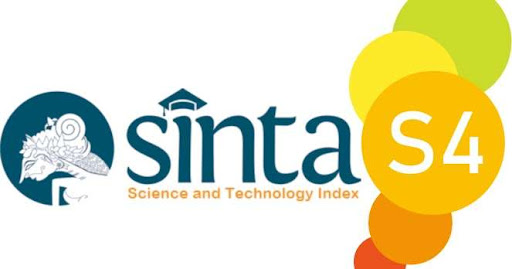The Effect of Aphasia on Sixty Six Years Old in Language Acquisition
DOI:
https://doi.org/10.36733/sphota.v16i1.7494Keywords:
Aphasia, acquisition, dementia, impairments, languageAbstract
This study aimed to describe language impairments (motor aphasia). The specific goals of the study include describing motor aphasia-related language impairments, their etiology, and the use of language by those who have these disorders (motor aphasia). In this study, the author discussed the effects of Aphasia on grandmother in language acquisition. In this study, the author observed the language of a grandmother who is 66 years old. This research was conducted in Medan. The grandmother who was a participant in this study was named Zaimah Kusuma. She has dementia in her language due to her old age. The researcher conducted this research using descriptive qualitative method. Data collection was taken by interview, recording, and documentation. Dementia is a disease that causes loss of memory and the ability to think. These conditions have an impact on the patient's lifestyle, social skills, and daily activities. According to the study's findings, the 66-year-old aphasia patients who were its participants are capable of speaking simple words, questions, and instructions. 66 years old aphasic patients can typically pronounce sentences with the pattern S-P, P-S, and P-K
References
Abutalebi, J., & Clahsen, H. (2018). Critical periods for language acquisition: New insights with particular reference to bilingualism research. In Bilingualism (Vol. 21, Issue 5, pp. 883–885). https://doi.org/10.1017/S1366728918001025
Arnon, I., McCauley, S. M., & Christiansen, M. H. (2017). Digging up the building blocks of language: Age-of-acquisition effects for multiword phrases. Journal of Memory and Language, 92, 265– 280. https://doi.org/10.1016/j.jml.2016.07.004
Artieda, G. (2017). The role of L1 literacy and reading habits on the L2 achievement of adult learners of English as a foreign language. System, 66, 168–176. https://doi.org/10.1016/j.system.2017.03.020
Asyrofi, M. Z., & Rokhmani, C. F. (2019). Demensia Vaskular pada Perempuan Usia 76 Tahun : Laporan Kasus Case Report of Vascular Dementia on 76 Years Old Female. Jurnal Majority, 8(2), 14–18. https://juke.kedokteran.unila.ac.id/index.php/majority/article/view/2442
Berndt, R. S., Mitchum, C. C., & Wayland, S. (1997). Patterns of sentence comprehension in aphasia: A consideration of three hypotheses. Brain and Language, 60(2), 197–221. https://doi.org/10.1006/brln.1997.1799
Bley-Vroman, R. W. (1989). What is the logical problem of foreign language learning? In S. Gass & J. Schachter (Eds.), Linguistic perspectives on second language acquisition (pp. 41–68). Cambridge University Press.
Buckingham, H. W. (1978). Review of Geschwind, Cohen & Wartofsky (1974): Selected Papers on Language and the Brain. Studies in Language, 2(3), 417–428. https://doi.org/10.1075/sl.2.3.14buc
Daulay, S. H., Dalimunte, M., & Ningrum, D. W. (2021). The Importance of linguistics for teachers in English language teaching. ENGLISH FRANCA: Academic Journal of English Language and Education, 5(2), 339.
Daulay, S. H., Niswa, K. (2021). Basic Morphology. Medan: UMSU Press.
Daulay, S. H., & Tanjung, A. P. (2022). An Analysis of One Year Old Children Language Acquisition: A Case Study in Bandar Tongah. ELITE Proceeding, 1(1), 119-128.
Daulay, S. H., Niswa, K., & Pratiwi, T. (2022). The Impact of Specific Language Impairment (SLI) in 6-Year-Old Children. Child Education Journal, 4(2), 123-138.
Deng, F., & Zou, Q. (2016). A study on whether the adults’ second language acquisition is easy or not—From the perspective of children’s native language acquisition. Theory and Practice in Language Studies, 6(4), 776. https://doi.org/10.17507/tpls.0604.15
Febriani, R. D. (2013). Studi Kasus Pada Anggela Efellin. Jurnal Pendidikan Bahasa Dan Sastra Indonesia, 381–388.
Gurunandan, K., Carreiras, M., & Paz-Alonso, P. M. (2019). Functional plasticity associated with language learning in adults. NeuroImage, 201(July), 116040. https://doi.org/10.1016/j.neuroimage.2019.116040
Hallowell, Brooke. (2023). Aphasia and Other Acquired Neurogenic Language Disorders: A Guide for Clinical Excellence, 2nd ed. San Diego: Plural Publishing.
Kidd, E., Donnelly, S., & Christiansen, M. H. (2018). Individual differences in language acquisition and processing. Trends in Cognitive Sciences, 22(2), 154–169. https://doi.org/10.1016/j.tics.2017.11.006
Kimppa, L., Shtyrov, Y., Hut, S. C. A., Hedlund, L., Leminen, M., & Leminen, A. (2019). Acquisition of L2 morphology by adult language learners. Cortex, 116, 74–90. https://doi.org/10.1016/j.cortex.2019.01.012
Malinda, E., & Daulay, S. H. (2023, June). The Urgency of First Language Acquisition in Three-Year-Olds. In English Language and Literature International Conference (ELLiC) Proceedings (Vol. 6, pp. 179-186).
McNeil, M. R., & Pratt, S. R. (2001). Defining aphasia: Some theoretical and clinical implications of operating from a formal definition. Aphasiology, 15(10–11), 901–911. https://doi.org/10.1080/02687040143000276
Mehri, Azar, and Shohreh Jalaie. (2014). A Systematic Review on methods of evaluate sentence production deficits in agrammatic aphasia patients: Validity and Reliability issues. Journal of Research in Medical Sciences: The Official Journal of Isfahan University of Medical Sciences 19: 885–98.
Montrul, S. (2020). How learning context shapes heritage and second language acquisition. In The Handbook of Informal Language Learning (pp. 57–74). https://doi.org/10.1002/9781119472384.ch4
Ningsih, F. R., & Daulay, S. H. (2023). Language Acquisition on 2 Years Old Child: Taqiyya Mahiroh Case. ELITE JOURNAL, 5(1), 195-202.
Paradis, Michel. (2001). Bilingual and polyglot aphasia. In Language and Aphasia. Edited by Rita Sloan Berndt. Amsterdam: Elsevier Science, pp. 69–91.
Perrotta G (2020) Aphasia: Definition, clinical contexts, neurobiological profiles and clinical treatments. Ann Alzheimers Dement Care 4(1): 021-026. DOI: https://dx.doi.org/10.17352/aadc.000014
Poirier, Sarah-Ève, Marion Fossard, and Laura Monetta. (2021). The efficacy of treatments for sentence production deficits in aphasia: A systematic review. Aphasiology 37: 122–42.
Sweller, J. (2017). Cognitive load theory and teaching English as a second language to adult learners. Contact Magazine, 43(1), 5–10.
Vogt, A., Kaup, B., & Dudschig, C. (2019). When words are upside down: Language–space associations in children and adults. Journal of Experimental Child Psychology, 186, 142–158. https://doi.org/10.1016/j.jecp.2019.06.001
Vygotsky, L. (1978). Interaction between learning and development. In Mind in society (pp. 79–91). Harvard University Press.
Wilshire, Carolyn E., Carolina C. Lukkien, and Bridget R. Burmester. (2014). The sentence production test for aphasia. Aphasiology 28: 658–91
Witjaksana, M., & Daulay, S. H. (2023, June). Phonetics Speech Pattern Of 4-Year-Old Child: Dysarthria Study. In English Language and Literature International Conference (ELLiC) Proceedings (Vol. 6, pp. 187-195).













